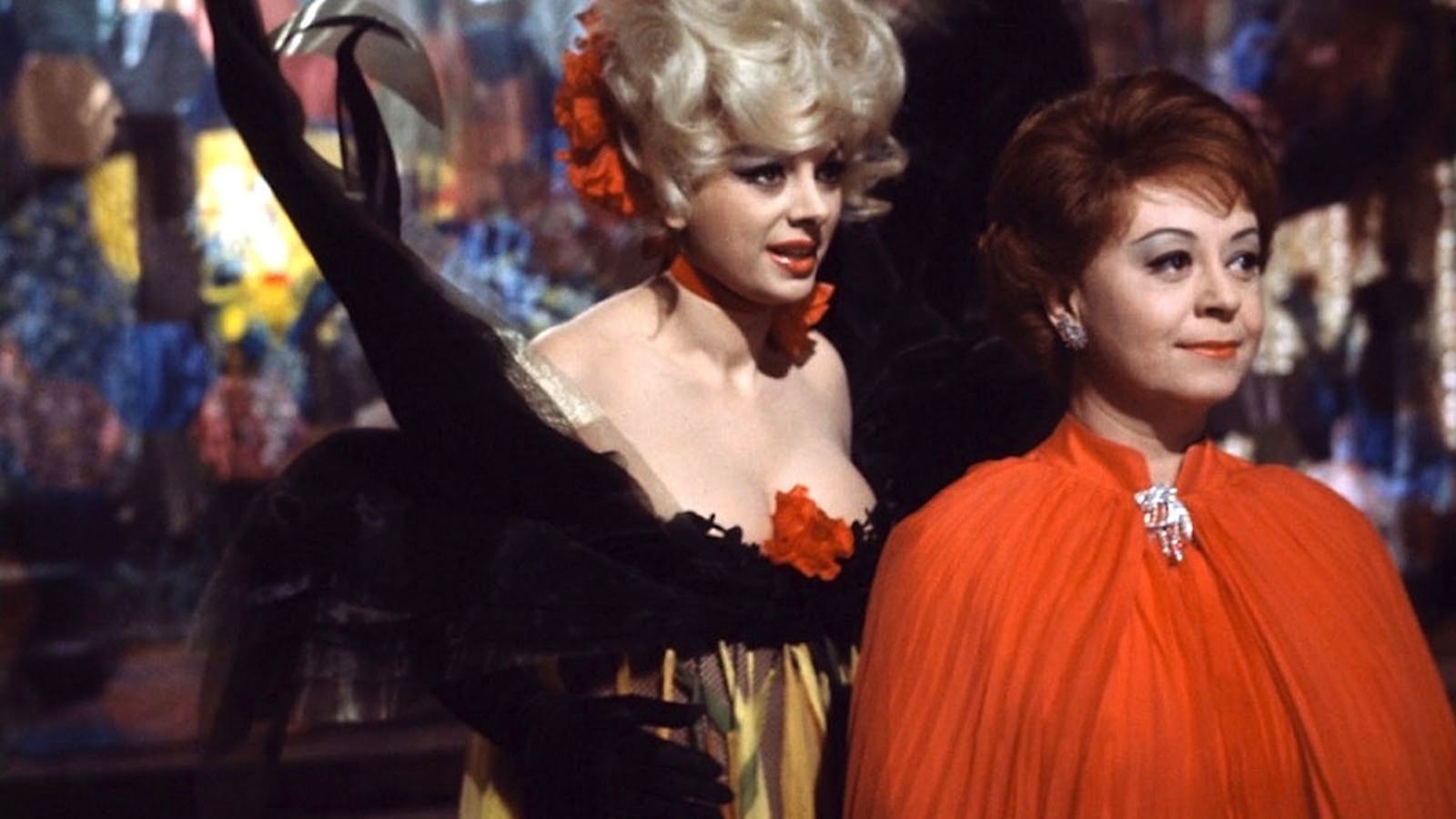Don't miss your future favorite film!
Subscribe to our newsletter and get the latest updates from the SIFF community delivered straight to your inbox.
Don't miss your future favorite film!
Subscribe to our newsletter and get the latest updates from the SIFF community delivered straight to your inbox.
Tova Gannana | Wednesday, May 31, 2023

Juliet Of The Spirits (1965) film notes by Tova Gannana for Greg Olson’s Life is a Feast: The Cinema of Federico Fellini at SIFF.
The American fashion designer Bill Blass said, “When in doubt, wear red.” No color is left out in Juliet Of The Spirits (1965), but Juliet (Giulietta Masina) discovers that she is being left out from her own life. Juliet lives in a white and yellow house with green shutters and an expansive green lawn. Flowers bloom in her yard; inside, flowers are arranged in vases. Juliet is thorough, not fancy. Her companion is not her husband Giorgio (Mario Pisu) but her maids, Elisabetta (Milena Vukotic) and Teresina (Elisabetta Gray) who fuss and focus on Juliet’s every need. Giorgio is a man about town. He throws parties we never see. We see Giorgio as Juliet plays hostess, sometimes reluctantly.
Film critic Pauline Kael was critical of Fellini’s films starting with La Dolce Vita (1960). From Kael’s 1966 essay Movie Brutalists for The New Republic, “Few seem to have noticed that by the time of Juliet Of The Spirits Fellini had turned into a professional party-giver. Film-making, carried out the way a lot of kids do it, is like having a party. And their movie “ideas” are frequently no more than staging and shooting a wild, weird party.” Certainly Juliet Of The Spirits features many parties, but what gives a party depth is that Juliet stands apart from the party. We are watching Juliet for her reactions. Through Juliet, not her husband or his many friends, we feel the film. The others do most of the talking until the last few scenes when Juliet’s own thoughts and memories take over. She becomes suicidal. The party is over, or more correctly, the party had always been meaningless. The others dress in outrageous outfits with wild makeup and coiffed hair. In her simplicity, Juliet is authentic and modest, pulled together. Juliet’s wardrobe is modern, a red sweater with a white blouse underneath and a pair of white slacks, a green coat with red accents and a red scarf tied neatly around her head and neck, a diaphanous red dress and cape; her clothes in their good taste show her inner strength.
Juliet’s glamorous mother and sisters question her appearance. She wears little makeup; they wear a lot. Statuesque like 1920’s flappers in long pearls, boas and wide brimmed straw hats, they wear their party. The party is not in their hearts. Juliet is generous in spirit. The film mimics Fellini’s own life. Giorgio’s mistress, Gabriela, is a fashion model. Fellini had a 17 year affair with the actress Sandra Milo who plays Suzy. In a Fellniesque twist, Juliet, played by Fellini’s wife, is the hero of his film, not her cheating husband Giorgio who seems to be based on Fellini. When Juliet begins to doubt Giorgio’s fidelity she recalls him telling her, “I would never lie to you.” Lying is exactly what Giorgio is about. Gabriella calls daily and hangs up when the phone is answered. In this way Gabriella enters the film as a spirit. Her presence felt is a worry. The film feels like a three way conversation between Fellini, Milo, and Masina.
Juliet’s most persistent friend Valentina (Valentina Cortese) has a husband who hates when she arrives late. Valentina is rootless while Juliet is rooted in her home. Valentina invites Juliet to hear Bhisma, a medium, and encourages her to ask a question. Bhisma never asks Juliet but tells her that she must listen to the spirits and in turn the spirits tell her to listen to Suzy, her next door neighbor who teaches her how to please Giorgio in love and marriage. Is Giorgio worthy of Juliet learning these lessons? No.
Kael compared the auteur generation to “cool Peter Pans.” “One can imagine their faces if they had to listen to those teachers who used to tell us that you had to be able to do things the traditional ways before you earned the right to break loose and do things your way.” Fellini as a cool Peter Pan is a great description. Fellini asks the audience to be seekers, to be with him on his trip. W.B. Yeats wrote, “Irish Poets, learn your trade/ Sing whatever is well made/ Scorn the sort now growing up/ All out of shape from toe to top, Their unremembering hearts and heads/ Base-born products of base beds.” Kael clearly meant the same. Reading her criticism of Fellini brings one closer to the Fellini experience which is not about tuning out but tuning in. Even if Fellini was annoyed by her commentary, being written about by Kael is an honor.
Fellini, influenced by comic strips, started out as an illustrator. Juliet Of The Spirits plays like a page turner. Characters enter scenes like they are first violinists. Juliet smiles like the Mona Lisa, ambiguous while the others are sure. She will find clarity. As is written by Yeats, Juliet is aware that, “the center will not hold.” Juliet is lucid all the while she is in contact with and “of the spirits.” Fellini, brought up Catholic would have been taught about spirituality and warned about secularism, paganism, and sin. As lost as she begins, Juliet via Fellini becomes our guide; if we are to get loose from disillusions as she does, we must follow.
Don't miss your future favorite film!
Subscribe to our newsletter and get the latest updates from the SIFF community delivered straight to your inbox.
Don't miss your future favorite film!
Subscribe to our newsletter and get the latest updates from the SIFF community delivered straight to your inbox.